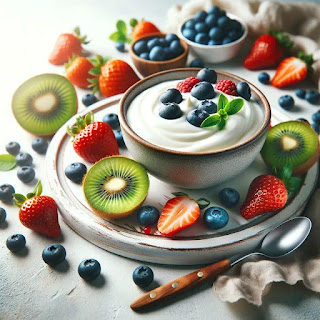The Ultimate Guide to Crafting Authentic Baklava: A Culinary Journey into the Heart of Mediterranean Desserts
Introduction: The Elegance of Baklava
Baklava—a name that evokes the rich tapestry of the Mediterranean culinary landscape. This intricately layered pastry, infused with honey and nuts, has been a staple in Mediterranean and Middle Eastern households for centuries. But crafting authentic baklava is more than just a recipe; it's an art form. In this comprehensive guide, we delve into the nuances that make baklava a timeless classic.
The Origins: Baklava's Rich History
Tracing its roots back to the Ottoman Empire, baklava is a testament to how food can transcend cultural and geographical barriers. Whether you're in Greece, Turkey, or Lebanon, you'll find baklava gracing the tables during festive occasions. The recipe might differ, but the essence remains the same: layers of phyllo dough, a medley of nuts, and a generous drizzle of syrup or honey.
Choosing Quality Ingredients: The Foundation of Authentic Baklava
Phyllo Dough: The Canvas
The base of any baklava is the phyllo dough. Opt for premium-quality, pre-made dough for convenience or make your own if you're up for the challenge. The key is to keep the dough moist and pliable to achieve those flaky layers.
Nuts: The Heart
Whether you're a fan of walnuts, pistachios, or almonds, the choice of nuts can dramatically alter the flavor profile. Source fresh, organic nuts for the most authentic taste.
Syrup vs. Honey: The Sweet Debate
Traditional baklava recipes often call for a simple syrup flavored with rose or orange water. However, using high-grade honey can add a more robust flavor.
The Layering Technique: A Symphony of Flavors and Textures
Step 1: Preparing the Pan
Grease a large baking pan with melted butter to ensure that your baklava doesn't stick.
Step 2: The First Layer
Lay down the first layer of phyllo dough and brush generously with melted butter. Repeat this process until you have a base of at least 5 layers.
Step 3: Adding the Nut Mixture
Spread your chosen nut mixture evenly over the base. A dash of cinnamon can elevate the flavors.
Step 4: More Layers
Continue layering phyllo dough and butter until you've used up all your sheets. Remember, the top layer should also be at least 5 sheets deep.
Step 5: Cutting and Baking
Before baking, cut the baklava into your desired shapes—usually diamonds or squares. Bake at 350°F (175°C) until golden brown.
Step 6: The Final Touch
Pour your syrup or honey over the baked baklava while it's still hot. Allow it to cool and absorb the sweetness.
Expert Tips: Elevating Your Baklava Game
- Timing is Everything: Pour the syrup over hot baklava to ensure it gets absorbed properly.
- Presentation: Garnish with ground pistachios or a sprinkle of edible gold for that extra flair.
- Storage: Baklava can be stored in an airtight container for up to a week without losing its freshness.
Conclusion: The Timeless Appeal of Baklava
Creating authentic baklava is not just about following a recipe; it's about understanding its rich history and the nuances that go into each layer. From selecting high-quality ingredients to mastering the art of layering, each step is a crucial part of the journey. And the result? A mouthwatering dessert that's as rich in flavor as it is in history.
If you want to read more information about how to boost traffic on your Website just visit --> The Insider's Views




Comments
Post a Comment